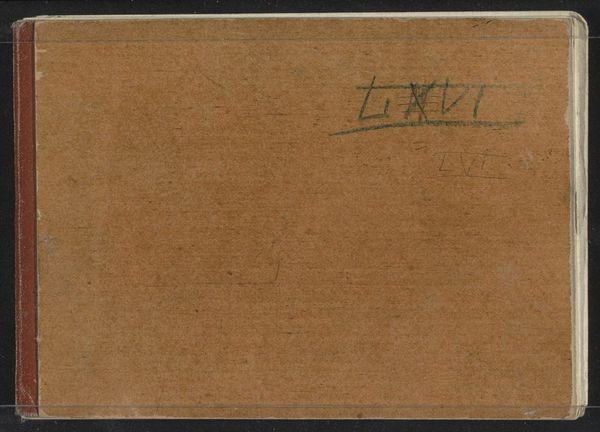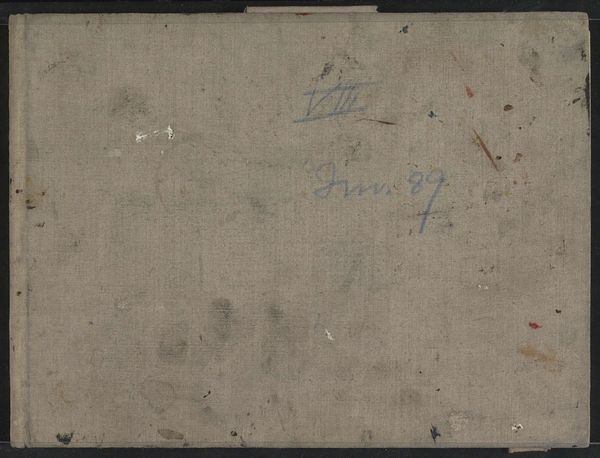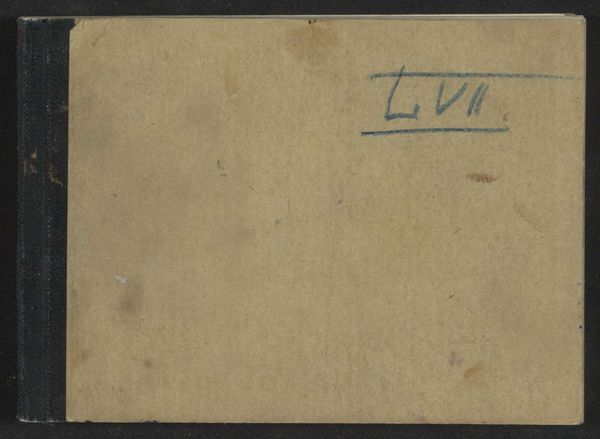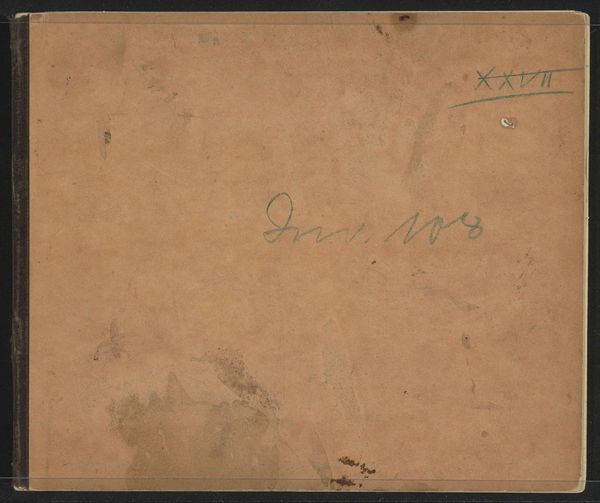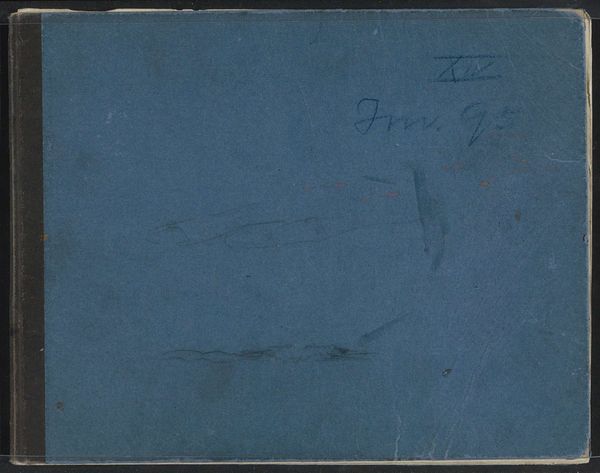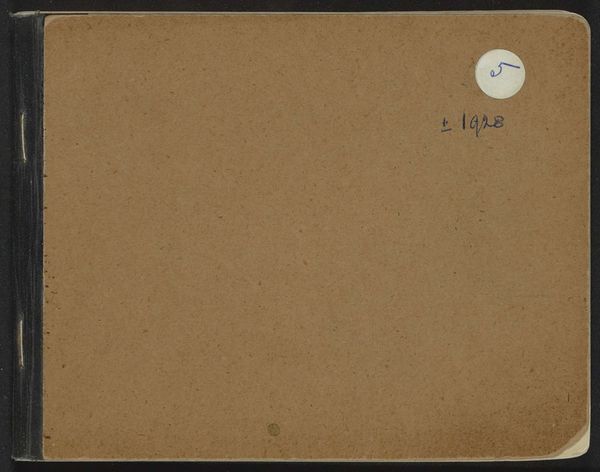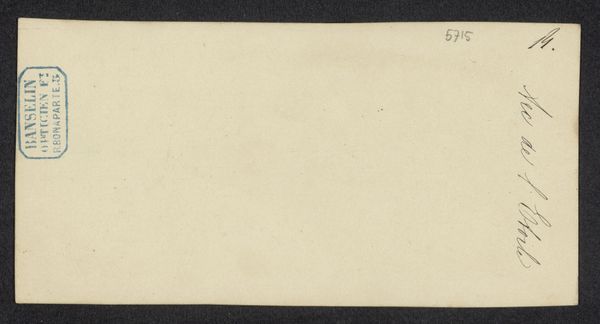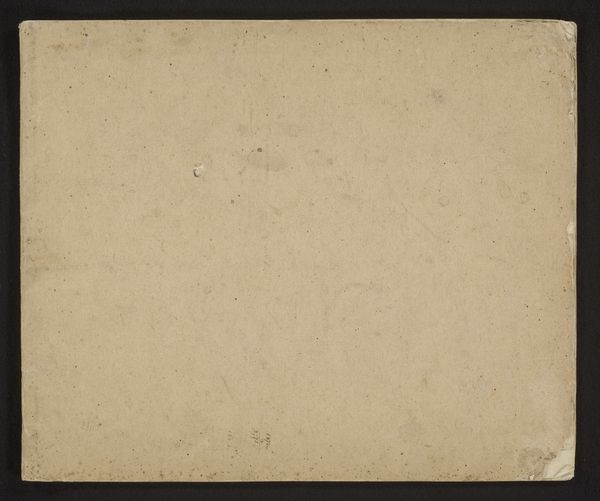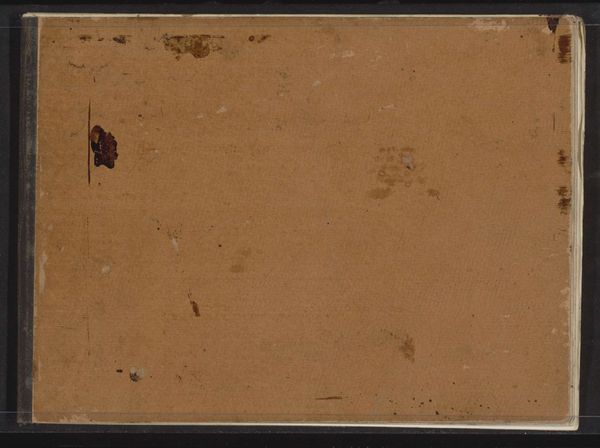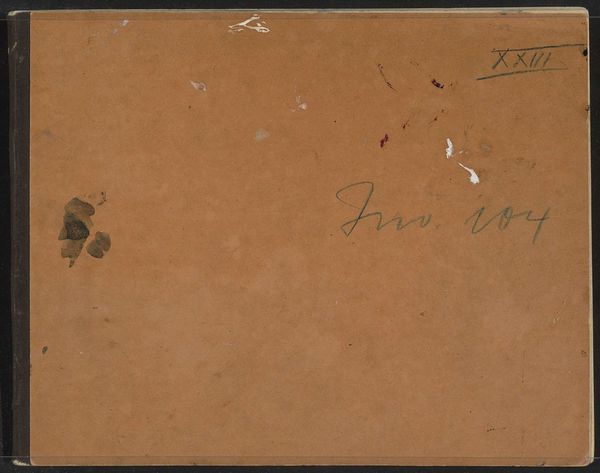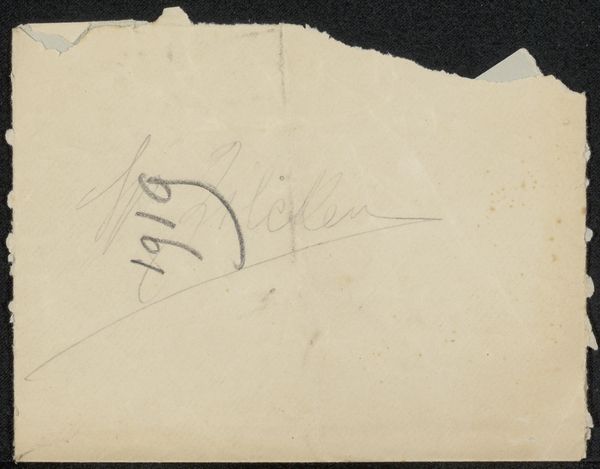
drawing, mixed-media, paper, pencil
#
drawing
#
aged paper
#
mixed-media
#
paper
#
personal sketchbook
#
coloured pencil
#
pencil
#
sketchbook art
#
limited palette
Dimensions: height 123 mm, width 170 mm, thickness 3 mm, width 340 mm
Copyright: Rijks Museum: Open Domain
Curator: The image we're looking at is of Isaac Israels’ "Sketchbook LVIII met 14 bladen," created sometime between 1923 and 1934. It is currently held at the Rijksmuseum. Editor: Well, immediately I notice the sketchbook’s muted palette, almost monochromatic, creating a sense of aged intimacy and drawing me to inspect the pages contained within. Curator: It’s interesting you mention intimacy. Sketchbooks, by their very nature, offer a peek into the artist’s mind, their processes, and often reveal the cultural and societal context they were working within. What could the artist be drawing? Editor: Yes, exactly! I agree! But here the focus rests on the texture of the paper and subtle tonal variations across the cover. Note how light plays across the surface, giving dimension to this flat plane. Curator: Indeed, focusing on the cover of this sketchbook is interesting since it potentially provides insight into his broader practice and the role of sketching in his process. How does the exterior presentation inform your understanding of Israels' creative world, especially concerning contemporary expectations for sketchbooks? Editor: Precisely, consider how the seemingly plain presentation allows us to focus solely on the relationship between the physical object—paper, binding, numbering. There are aesthetic codes here that are independent from external considerations. Curator: And yet, these aesthetic codes existed within a particular historical context. Consider the economics of art production. The availability and cost of materials surely influenced not just the aesthetic qualities but the sheer fact that these were sketches to be viewed publicly or for personal use. Editor: It's a compelling argument, definitely a complex web of personal expression and cultural factors impacting even preliminary sketches. Curator: Thinking about it now, perhaps viewing sketchbooks only through a biographical lens limits us to viewing artmaking as a straightforward endeavor instead of acknowledging that artmaking and selfhood are both messy, contingent, relational processes. Editor: True! We have uncovered quite a lot about art, aesthetics, and the role of historical frameworks. It is enriching to find that balance between pure observation and the wider context it fits into.
Comments
No comments
Be the first to comment and join the conversation on the ultimate creative platform.

